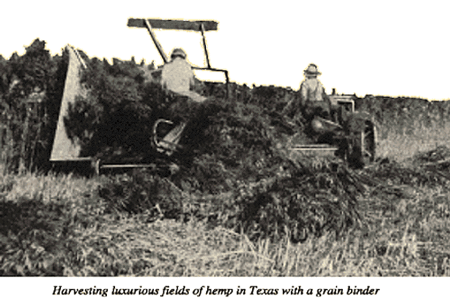Dean Norton, director of horticulture at George Washington’s Mount Vernon, pulls out his cellphone and cranks up some Jimi Hendrix music as he walks toward the cannabis patch on the founding father’s estate.
The “weed” is tall, planted in tight rows and has the serrated leaf edges of your classic ganja.
As Hendrix’s 1968 epic “Voodoo Child” drifts from the phone, Norton jokes about having a suitable vibe for the plot. “We should have a speaker in the middle,” he says. “Would people go nuts? “
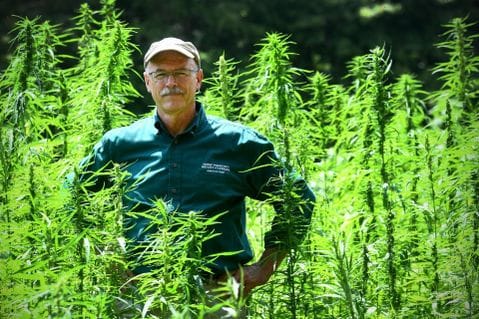
Dean Norton, director of horticulture at Mt. Vernon
But this is not that kind of hemp. You don’t smoke this stuff. This is raised for its fiber. It’s industrial hemp, the kind Henry Ford sought to build cars with. And Mount Vernon has started growing it because George Washington did.
The landmark home of the nation’s first president, about 20 miles south of Washington, is part of an effort to return industrial hemp to its historical context and promote its use in the modern world.
Industrial hemp, while cannabis, is far different from its marijuana cousin.
While both contain tetrahydrocannabinol, THC, the substance that’s creates the “high,” industrial hemp contains only tiny amounts of THC and has no psychoactive effect, experts say.
Recreational marijuana has roughly 10 to 30 percent THC in its dry weight of flowers, said Michael P. Timko, professor of biology and public health sciences at the University of Virginia. Industrial hemp has .3 percent or less.
But the industrial strain, which was widely grown in colonial Virginia to make fiber for rope and other products, became lumped over time with the recreational strain. And both were stigmatized and suppressed in the early 20th century.
“You have different strains for different things,” Norton said recently as he stood near his hemp patch, down the hill from Washington’s famous manor house. “They’ve really been able to come up with . . . really strong fiber plants, really strong oil plants and really strong recreational plants.”
“But that’s not what we’re doing here,” he said. “This is totally for interpretation purposes. . . . You could a build bonfire with this, sit around it, breathe it, nothing’s going to happen.”
Still, Norton needed a license to cultivate. “My kids love to say I’m a grower,” he said. “I’m (license) number 86 . . . I think it’s really cool.”
Mount Vernon visitors are intrigued.
“The funniest thing is the people that are familiar with hemp, or the other,” he said. “They stop. They look. They go take pictures. [They’ll say] ‘Remember the old VW bug we had.’ It’s always a VW. It’s great. It’s really fun to watch the people that know.”
Industrial hemp was an important crop in colonial times. A sailing ship could require thousands of feet of hemp rope for its rigging, Norton said.
Hemp “is abundantly productive and will grow for ever on the same spot,” Thomas Jefferson wrote of it.
Jefferson invented a special hemp “break” for processing it. He wrote that he used hemp “for shirting our laborers” — his slaves — because cotton was too expensive.
In the 1700s, it was so valuable that Virginia paid farmers to grow it. Washington took advantage of that, writing in 1767, that he “applied to the fund for giving a Bounty on Hemp.”
He planted it in abundance, especially in one tract he called Muddy Hole.
But it was a labor-intensive crop.
The outside fiber had to be separated from the inner core, or “hurd.”
It had to be pulverized, then soaked in water or dew, to help in the extraction. But when the process was completed, the fiber was long and strong.
The idea to return hemp to Mount Vernon came from Brian Walden, 37, a farmer in Charlottesville, who got the notion after a 2014 federal law cleared the way for academic research into industrial hemp cultivation, he said in a telephone interview.
Farmers were permitted to grow it if they joined a research program and partnered with a university that wanted to study industrial hemp, he said.
He connected with the University of Virginia. He “donated land, equipment, expertise,” he said, and began to grow it locally.
Last year, he came up with a hemp plan for Mount Vernon, to boost the crop’s image and illustrate its role in history. Norton was hesitant at first, but agreed this year. The first seeds were planted June 13.
The 6o-day crop should be ready for harvest soon, Walden said.
A similar plot has been planted at Montpelier, the Orange County, Va., home of founding father James Madison.
Hemp was a big crop in the colonial Mid-Atlantic, Walden said. “We couldn’t grow flax, like they can up north,” he said. “And we couldn’t grow cotton, like they do down south.”
But in the 20th century, with the rise of the recreational strain, all hemp became stigmatized. “They clumped them all together,” Walden said.
(Medicinal use of hemp/marijuana has been traced back to 1576, when it was recommended for use in treating an unstable Prussian duke, according to historian H. C. Erik Midelfort.)
In 1937, a huge “marihuana” tax was placed on hemp that “made every farmer drop it like a dime,” he said.
But in the 1940s, some production returned because of the wartime need.
In 1942, the Agriculture Department produced a 14-minute film, “Hemp for Victory,” urging farmers to grow it again.
For the sailor and the hangman, it had been indispensable in the past, the narrator declared. Now it was needed for shoe thread, parachute webbing, and 30,000 feet of rope for every battleship.
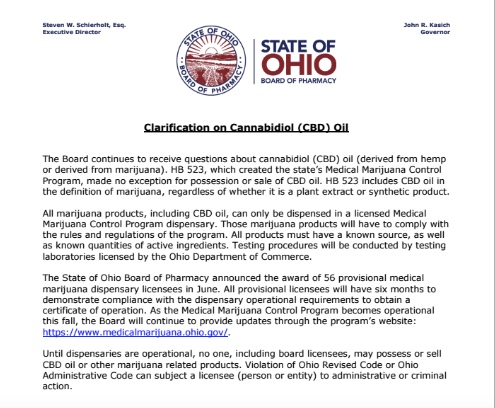 All products containing CBD — short for cannabidiol — will have to comply with the rules of the state’s medical marijuana program, including undergoing testing in a state-licensed lab. None of the four labs issued provisional licenses is open for business and likely won’t be until cultivators near their first harvest, which is, again, months away.
All products containing CBD — short for cannabidiol — will have to comply with the rules of the state’s medical marijuana program, including undergoing testing in a state-licensed lab. None of the four labs issued provisional licenses is open for business and likely won’t be until cultivators near their first harvest, which is, again, months away.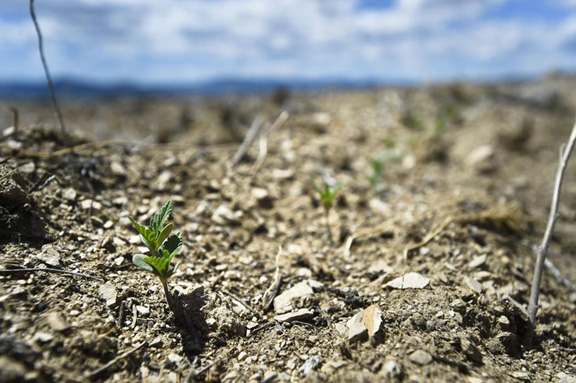 In June of 2017 Vote Hemp was contacted by Kim Phillips, a family farmer from Montana who had received a state license to grow hemp. She planted the seed and after hemp plants initially sprouted, she didn’t receive any rain. She requested access to water from the Bureau of Reclamation as she had previously for her other crops, but they denied her request and told her that hemp was federally illegal. She was growing hemp in a state licensed hemp pilot program which was authorized by Section 7606 of the 2014 Farm Bill and her crop was completely legal under state and federal law. She explained this but the Bureau of Reclamation refused to acknowledge the facts and again denied her water access.
In June of 2017 Vote Hemp was contacted by Kim Phillips, a family farmer from Montana who had received a state license to grow hemp. She planted the seed and after hemp plants initially sprouted, she didn’t receive any rain. She requested access to water from the Bureau of Reclamation as she had previously for her other crops, but they denied her request and told her that hemp was federally illegal. She was growing hemp in a state licensed hemp pilot program which was authorized by Section 7606 of the 2014 Farm Bill and her crop was completely legal under state and federal law. She explained this but the Bureau of Reclamation refused to acknowledge the facts and again denied her water access.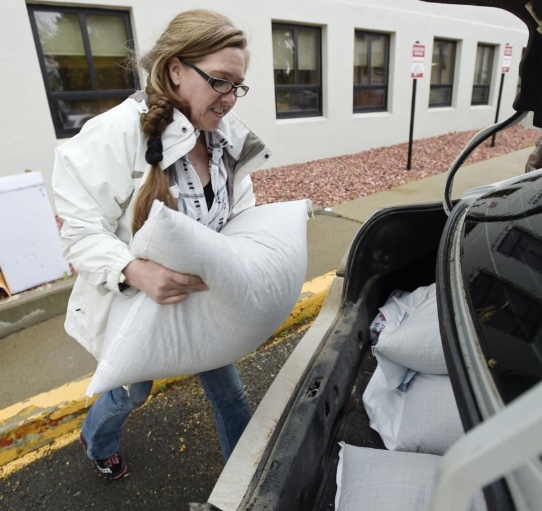 Kim decided to try to grow hemp again in 2018. This time she contacted the Bureau of Reclamation before planting. They again resisted providing the water. Kim’s lawyer Penelope Strong and Vote Hemp board member and Hoban Law attorney, Patrick Goggin, both spoke with officials at the Bureau of Reclamation and urged them to reconsider. Additional arguments were provided including the recent 9th Circuit decision in HIA v. DEA. Finally on June 1, 2018, Patrick was
Kim decided to try to grow hemp again in 2018. This time she contacted the Bureau of Reclamation before planting. They again resisted providing the water. Kim’s lawyer Penelope Strong and Vote Hemp board member and Hoban Law attorney, Patrick Goggin, both spoke with officials at the Bureau of Reclamation and urged them to reconsider. Additional arguments were provided including the recent 9th Circuit decision in HIA v. DEA. Finally on June 1, 2018, Patrick was 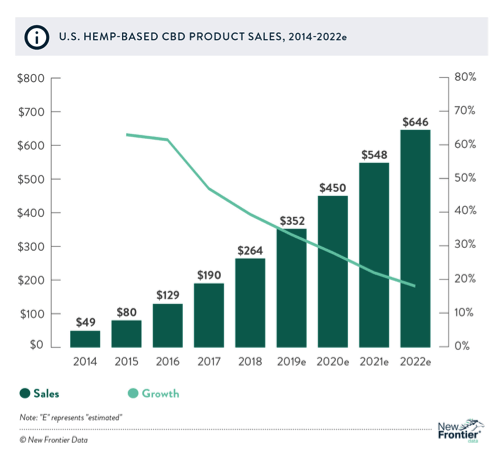
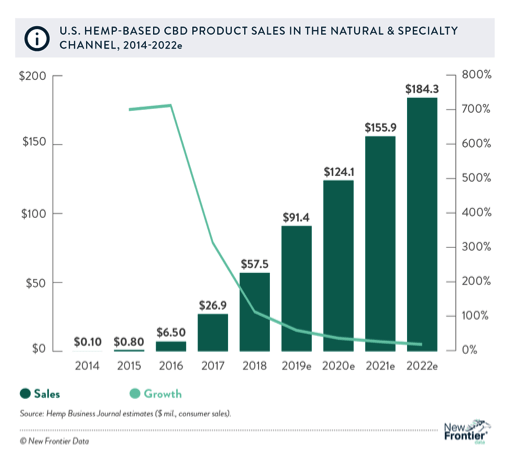



 American farmers are promised a new cash crop with an annual value of several hundred million dollars, all because a machine has been invented which solves a problem more than 6,000 years old. It is hemp, a crop that will not compete with other American products. Instead, it will displace imports of raw material and manufactured products produced by underpaid coolie and peasant labor and it will provide thousands of jobs for American workers throughout the land.
American farmers are promised a new cash crop with an annual value of several hundred million dollars, all because a machine has been invented which solves a problem more than 6,000 years old. It is hemp, a crop that will not compete with other American products. Instead, it will displace imports of raw material and manufactured products produced by underpaid coolie and peasant labor and it will provide thousands of jobs for American workers throughout the land.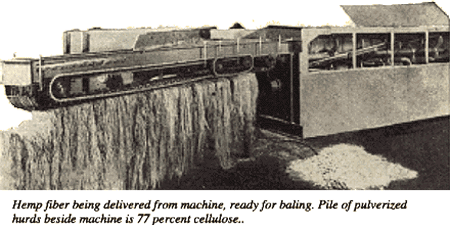 Under old methods, hemp was cut and allowed to lie in the fields for weeks until it “retted” enough so that the fibers could be pulled off by hand. Retting is simply rotting as a result of dew, rain and bacterial action. Machines were developed to separate the fibers mechanically after retting was complete, but the cost was high, the loss of fiber great, and the quality of fiber comparatively low. With the new machine, known as a decorticator, hemp is cut with a slightly modified grain binder. It is delivered to the machine where an automatic chain conveyor feeds it to the breaking arms at a rate of two or three tons per hour. The hurds are broken into fine pieces that drop into the hopper, from where they are delivered by blower to a baler or to a truck or freight car for loose shipment. The fiber comes from the other end of the machine, ready for baling.
Under old methods, hemp was cut and allowed to lie in the fields for weeks until it “retted” enough so that the fibers could be pulled off by hand. Retting is simply rotting as a result of dew, rain and bacterial action. Machines were developed to separate the fibers mechanically after retting was complete, but the cost was high, the loss of fiber great, and the quality of fiber comparatively low. With the new machine, known as a decorticator, hemp is cut with a slightly modified grain binder. It is delivered to the machine where an automatic chain conveyor feeds it to the breaking arms at a rate of two or three tons per hour. The hurds are broken into fine pieces that drop into the hopper, from where they are delivered by blower to a baler or to a truck or freight car for loose shipment. The fiber comes from the other end of the machine, ready for baling.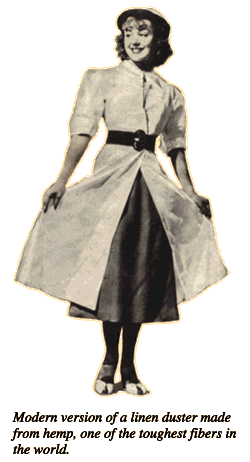 From this point on, almost anything can happen. The raw fiber can be used to produce strong twine or rope, woven into burlap, used for carpet warp or linoleum backing or it may be bleached and refined, with resinous by-products of high commercial value. It can, in fact, be used to replace foreign fibers which now flood our markets.
From this point on, almost anything can happen. The raw fiber can be used to produce strong twine or rope, woven into burlap, used for carpet warp or linoleum backing or it may be bleached and refined, with resinous by-products of high commercial value. It can, in fact, be used to replace foreign fibers which now flood our markets.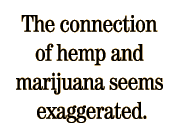 The paper industry offers even greater possibilities. As an industry it amounts to over $1,000,000,000 a year, and of that, eighty per cent is imported. But hemp will produce every grade of paper and government figures estimate that 10,000 acres devoted to hemp will produce as much paper as 40,000 acres of average pulp land.
The paper industry offers even greater possibilities. As an industry it amounts to over $1,000,000,000 a year, and of that, eighty per cent is imported. But hemp will produce every grade of paper and government figures estimate that 10,000 acres devoted to hemp will produce as much paper as 40,000 acres of average pulp land.